

Teaching Your Students About Fake News - Listenwise Teacher Support Center. Harmony Square. Connected Papers. How students engage with news. HOW DO YOU KNOW THAT NEWS STORY IS REAL? - MetroFocus. #Lockdownlibrarianship — Library Whisperers. The covid19 pandemic is bringing out the best and the worst in people.
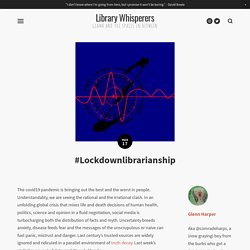
Understandably, we are seeing the rational and the irrational clash. PISA’s warning: teachers need to teach Information Literacy explicitly if we are to reverse the decline – Information Literacy Spaces. On December 03rd 2019, Stuff news reported on the results of the 2018 round of the OECD’s PISA(1) testing in Reading Literacy, Mathematics Literacy and Science Literacy(2).
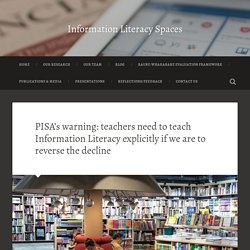
The article noted the consistent downward trends in achievement, since 2012, of New Zealand 15 year olds in these three ‘curriculum’ areas. I want to concentrate on Reading Literacy. In 2018, students were selected from subject English classrooms to complete the PISA test, and the subsequent analysis then refers to English classrooms, teachers and their practice. My assumption therefore was that the ‘literacy’ test would focus on the conventional skills of comprehending and explaining the language and literary features of texts – that comprehension meant understanding what the texts were about at surface and deeper levels.
How to recognize fake news on Facebook. If you’ve been looking at Facebook lately, you may have seen that Pope Francis endorsed Donald Trump, a town in Texas was quarantined due to a deadly disease and Germany just approved child marriage.
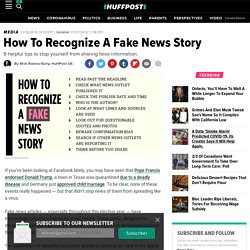
To be clear, none of these events really happened ― but that didn’t stop news of them from spreading like a virus. Fake news articles ― especially throughout this election year ― have increasingly become a fixture on social media. These posts, designed to deceive, run rampant across the internet. Only later, if ever, do readers discover that the stories they shared may have been false. Welcome to OSLIS! — Oregon School Library Information System. Contrary to common belief, randomised controlled trials inevitably produce biased results. Much of the social and medical sciences depend on randomised control trials.
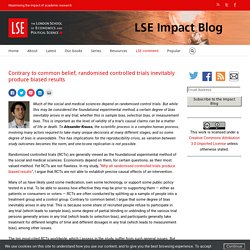
But while this may be considered the foundational experimental method, a certain degree of bias inevitably arises in any trial; whether this is sample bias, selection bias, or measurement bias. An Engaging Word Game Helps Students Grasp Implicit Bias. As part of an effort to demonstrate the effect of implicit bias, library media specialist Jacquelyn Whiting devised an exercise that looks similar to “Mad Libs,” the popular fill-in-the-blank word game.

Is this study legit? 5 questions to ask when reading news stories of medical research. Who doesn’t want to know if drinking that second or third cup of coffee a day will improve your memory, or if sleeping too much increases your risk of a heart attack?

We’re invested in staying healthy and many of us are interested in reading about new research findings to help us make sense of our lifestyle choices. But not all research is equal, and not every research finding should be interpreted in the same way. Nor do all media headlines reflect what was actually studied or found. So how can you tell? Keep these five questions in mind when you’re reading media stories about new studies. 1. Peer review is a process by which a study is checked by experts in the discipline to assess the study’s scientific validity. This process involves the researcher writing up their study methods and results, and sending this to a journal. Fact checking and fake news lesson plans - The ultimate teacher guide. The internet comes with an overload of information.

Though this is a benefit to most teachers and students, internet has a dark side. Photoshop shows you pictures of things that didn’t actually happen, websites have articles with fake content, and amateur journalists invent impressive statistics that are actually a hoax. On the internet, anything may look real, but it isn’t. Fake_news_game. Bad News - fake news game. Misreporting the science of lab-made organs is unethical, even dangerous. I work in the field of bioprinting, where the aim is to build biological tissues by printing living cells into 3D structures.
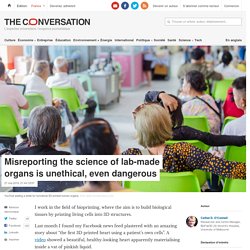
Last month I found my Facebook news feed plastered with an amazing story about “the first 3D printed heart using a patient’s own cells”. A video showed a beautiful, healthy-looking heart apparently materialising inside a vat of pinkish liquid. Big news. According to an impact tracking algorithm, the story has been picked up by 145 news outlets, tweeted 2,390 times to 3.8 million followers (as of May 27, 2019). Articles on Facebook have at least 13,000 shares, and videos about the story have been viewed well over 3 million times.
Numbers and the tricks they play - BBC Academy. Numbers can be used to tell all sorts of stories.
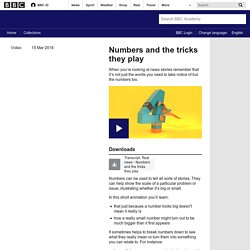
They can help show the scale of a particular problem or issue, illustrating whether it’s big or small. In this short animation you’ll learn:
Visual Literacy. Digital Literacy. Resources. Creative commons and academic honesty. Basic Essay Structure. Subject headings vs keywords. Search Smarter: creating searching strategies. Amazing mind reader reveals his 'gift'. Opinion and fact. Creative Commons. Credible? Or not? Image search exercise. Trash or Treasure websites. Evaluate these websites.